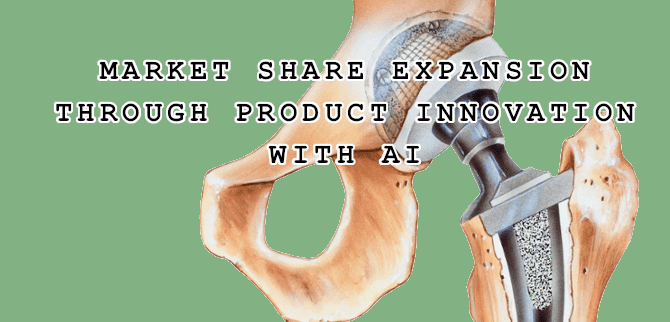
21 Oct Market Share Expansion Through Physical Product Innovation with AI and IoT
Unless your company is certain it has saturated its core market, it’s generally more profitable and less risky to employ value creation capital to expand market share (find new customers in current markets) rather than to expand markets (find new customers in new markets). Customer retention, pricing optimization, product competitiveness, marketing and distribution all factor into organic market share growth. In addition to the role smart tech plays in retention and pricing, as discussed earlier, it also plays two new and meaningful roles in market share expansion: defining the ideal customer profile (ICP) to market to, and making a product more competitive. Here we’ll focus on the latter: how AI and IoT can make a physical product smart and more competitive.
We all own some type of smart product: a smart watch, a smart thermostat, a smart car or the OG of smart, a smart phone. All share two technical characteristics: they are software-defined and data-driven. But more importantly they’re usually the most valued products in their category because they are the most innovative and differentiated. This leads to, not only market share expansion, but also increased profitability, barriers to entry, bargaining power and brand recognition.
We all own some type of smart product: a smart watch, a smart thermostat, a smart car or the OG of smart, a smart phone. All share two technical characteristics: they are software-defined and data-driven.
To make a product smart let’s go back to software-defined and data-driven part. If the product is physical, we need to represent it digitally. This step is called virtualization and it’s represented by the smart product’s digital twin. Most twin how a product looks and operates, such as with a CAD model, but for value creation we twin how a product produces value, with an AI model.
Take for example a medical device I worked on with an early client. This family-owned, orthopedic surgery tool manufacturer made high-tech hip and knee replacement equipment. Their newest tool was the smart acetabular reamer. A reamer’s purpose is to drill out a hemispherical hole in the patients pelvis to hold the cup half of the artificial hip joint. Think of the device like a home power drill. When the power tool is used to drill wood too forcefully, friction between the drill bit and wood creates heat which galvanizes the chemical reaction of burning. Same sort of thing happens between the reamer head and pelvic bone cells except when friction heats the bone cells to greater than 131 °F, the cells not only burn, they die. This cell death, called necrosis, is the leading indicator of an unsuccessful replacement surgery. If there are too many dead bone cells the acetabular cup will not establish a good fit after being inserted, and over time it may move or rock with walking, creating great pain to the patient and great cost to the acetabular reamer’s customer (hospital, clinic, …) to pay for the necessary redress surgery. Currently 6% of patents need a redo after 5 years and 12% need one after 10 years.
Most twin how a product looks and operates, such as with a CAD model, but for value creation we twin how a product produces value, with an AI model.
The innovation then, and the way the smart acetabular reamer differentiates itself, is to never kill bone cells. Full stop. The rotational speed of the reamer head is controlled so that no matter how much pressure the surgeon applies and for however long it’s applied, its rotational speed will slow enough to prevent necrosis. And in the process, making it foolproof.
This results in a more competitive medical device. One that is more innovative and differentiated from its competitors and also reduces future follow-on surgery costs. And a device that delivers faster and more cost-effective surgeries for the customer while leaving patients happier and healthier. This is how market share is expanded through physical product innovation with smart tech.
HOW IT’S DONE
The first step in making the acetabular reamer smart is to virtualize it with a value sim developed with primary data and first principles. In this case the AI model can be represented by:
Pelvic bone cell temperature = f(rotational speed, pressure, time)
Embedded software within the device infers (executes) the AI model by inputting the real-time pressure and time data gathered by the instrument’s sensors in the instrument. The new and safer speed is calculated by solving for rotational speed. If the pelvic bone cell temperature is predicted to approach the necrosis temperature, the device’s embedded software slows down the rotational speed of the acetabular reamer to cool things down.
Contact us if you’d like to understand more or click calendar to schedule a free 30-minute consultation if you have a company to improve.






